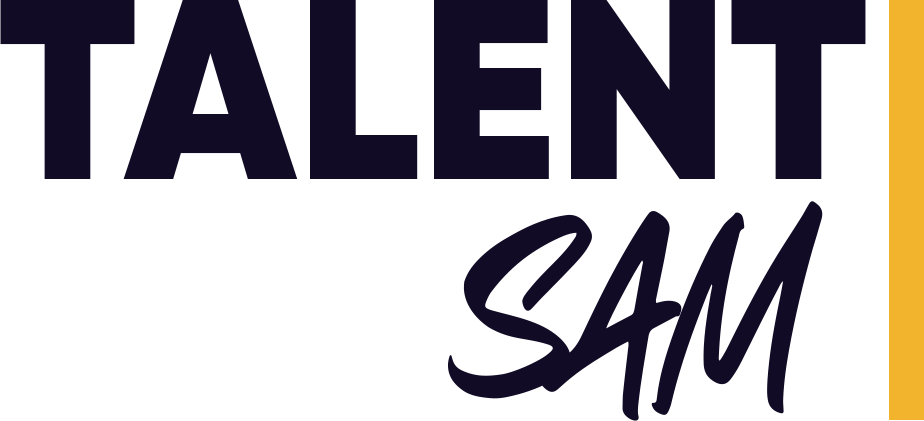AI, automation and HR SaaS tools have reshaped the recruitment industry. All of that innovation is intended to make it faster and easier for recruiters and talent managers to do their jobs.
But as of 2024, there are 43,140 HR tech startups in the world.
That might just be a little TOO much tech.
Instead of making the jobs of HR professionals easier, sometimes the tech overload can actually introduce added complexity or costs into the process.
So let’s cut through the noise and talk about how to simplify your HR tech stack, without sacrificing on functionalities.
We’ll be looking at:
- What is an HR Tech Stack?
- Why Are HR Stacks So Complicated?
- The Benefits of Consolidating Your HR Tech Stack
- HR Technology Stack Components
- How to Consolidate Your HR Tools
Read on for a full guide on streamlining HR tools and processing.
What is an HR Tech Stack?
An HR tech stack is a curated collection of digital tools and platforms designed to streamline and automate various human resource functions.
From recruitment and onboarding to performance reviews and workforce analytics, the HR tech stack covers a wide array of functions, all aimed at optimising the employee experience.
At most companies, this takes the form of a toolbox filled with specialised tools, each crafted for distinct HR tasks.
There are also all-in-one HR software, like SAP and FactorialHR, which combine multiple functionalities within a single platform, but the costs can be prohibitive for smaller businesses.
Why Are HR Stacks So Complicated?
HR tech stacks can be notoriously complex, leading to significant pain points for the end users of these systems:
- Integration Challenges:
One of the primary hurdles is the integration of diverse tools and platforms within the HR tech stack. Each software may have its own unique system requirements and data formats, leading to compatibility issues.
This fragmentation can result in disjointed workflows and data silos, making it difficult for HR professionals to have a unified overview of employee information and processes.
- Cost Management:
Managing the costs associated with multiple HR tools is another serious hurdle. Each tool often comes with its own subscription fees, licensing costs, and maintenance expenses.
As the stack grows, so too do the financial commitments, which can strain budgets and necessitate careful financial planning to ensure that resources are allocated efficiently without compromising on essential functionalities.
- User Experience Difficulties:
A convoluted HR tech stack can lead to a poor user experience. Employees and HR personnel may find themselves overwhelmed by the sheer number of tools they need to navigate daily.
This can result in a steep learning curve, frequent switching between applications, and decreased productivity. Simplifying and standardising the user interface across tools can significantly alleviate these issues, promoting smoother and more effective HR operations.
But it doesn’t have to be that way.
Let’s talk about how you can streamline HR processes (and save money) by cutting down on the number of tools you use.
The Benefits of Consolidating Your HR Tech Stack
- Reduced Subscription Costs
The finest HR tools come at a price, and adding each new tool to the stack can significantly impact your company’s budget.
To make matters worse, subscription costs vary widely depending on the tool type and the number of users.
For example, talent management software like BambooHR might cost around $5 to $8 per employee per month, while more comprehensive platforms like Workday can range from $100 to $200 per user monthly.
- Minimised Training Time
While some tools are intuitive, others require extensive training, consuming valuable time and resources.
For mid-sized companies, the entire process of researching, evaluating, purchasing, and implementing a new HRIS (Human Resource Information System) can take about 4-6 months. This includes not just the technical setup but also the training and onboarding of staff to effectively use the new system.
Streamlining your tech stack reduces the need for repetitive training sessions and helps maintain productivity levels across the organisation.
- Simplified User Experience
An overly complex tech stack can lead to inefficiencies and frustration, as employees find themselves constantly switching between applications.
A typical Fortune 500 employee juggles between apps 3,600 times each day, according to data from the Harvard Business Review.
Simplifying the stack ensures smoother operations and clearer data management, helping eliminate data silos and confusion.
- Enhanced Security
HR tools store sensitive employee data, making them attractive targets for cyber threats.
Case in point: The BBC breach in May 2024, which compromised the personal information of over 25,000 employees when hackers accessed the company’s pension scheme via a cloud storage device and obtained sensitive employee information.
A streamlined stack minimises vulnerabilities like these and reduces the risk of third-party breaches, ensuring robust data protection for your employees.
HR Technology Stack Components
If you want to build a comprehensive HR tech stack, there are lots of moving parts to consider, each serving a pivotal role in HR management.
Here’s a breakdown of some of the common tools in an HR tech toolkit, with examples of different software providers for each:
| Tech Platform | Functionality | Software | Cost |
|---|---|---|---|
| Human Resource Information System (HRIS) | Acts as a central hub for employee data, payroll, and benefits management. | ADP Workforce Now | Approx. $62 per user monthly |
| Performance Management Tools | Facilitates performance tracking, feedback, and appraisals. | Lattice | Plans start at $11 per user monthly |
| Employee Engagement Platforms | Drives engagement through feedback, recognition, and analytics. | 15Five | $7 per user monthly |
| Employee Recognition Software | Encourages a culture of appreciation through rewards. | Bonusly | Starts at $3 per user monthly |
| HR Analytics and Reporting Tools | Offers insights into HR metrics and workforce trends. | Visier | Customised based on needs |
| Onboarding Systems | Simplifies new hire integration and acclimatisation. | ClearCompany | Approx. $200 per month for small teams |
As you can see, all of these tools quickly start to add up – both in terms of costs and in terms of the time it takes to manage each one.
So what’s the solution?
Simplify the stack.
How to Consolidate Your HR Tools
An audit of your HR tech stack could unveil hidden inefficiencies, so start by looking at your current systems to get a holistic view.
Here’s 7 steps to trimming down your HR tools to get the most efficiency from your tech stack:
Step 1: Inventory Your Tools
Start by making a comprehensive list of all the HR tools you currently use.
Detail each tool’s primary functions, and note any additional capabilities they might offer.
This inventory serves as a foundation for understanding the scope and usefulness of your existing technology.
Step 2: Segment Tools by Function
Once you have your inventory, categorise each tool based on its core functions.
Group similar tools together to better visualise overlaps and gaps.
For instance, you might segment tools into categories such as recruitment, employee engagement, payroll, performance management, and learning and development.
Step 3: Evaluate Effectiveness and Usage
Gather data on how often and how well tools are being used to see if they’re truly effective.
You can use feedback from the HR team and end-users to understand satisfaction levels and gather insights into any pain points.
This evaluation helps identify tools that are underutilised or not meeting organisational needs.
Step 4: Identify Redundancies
Look closely at tools with overlapping functions. While some redundancy can offer flexibility, too much can lead to inefficiencies and increased costs.
Decide whether a single, more comprehensive solution can replace multiple tools.
Consider factors such as user preference, integration capabilities, and overall impact on workflow.
Step 5: Align Tools with Organisational Needs
Analyse whether each tool aligns with the strategic goals of your organisation.
This involves determining if the tools support current operational needs and can scale with future growth.
Tools that don’t contribute significantly to achieving business objectives should be considered prime targets for elimination or replacement.
Step 6: Optimise and Streamline
With insights from your audit, you can begin optimising your tech stack.
This might involve renegotiating vendor contracts, consolidating tools, or investing in new solutions that better fit your needs.
Prioritise tools that enhance efficiency, improve data integration, and provide a clear return on investment.
Step 7: Plan for Continuous Improvement
An audit is not a one-time event but an ongoing process.
Establish a routine schedule for reviewing and updating your tech stack to ensure it continues to meet evolving business demands.
Simplify HR Processes Forever
Simplifying your HR processes can transform your operations.
But it’s an ever-shifting tech landscape we live in, so your tech stack will never be static. Keep reviewing the efficiency of your current system and look at new tools coming on the market to make sure you have the best fit.
Or, if you’re really overburdened with HR tasks, let us manage hiring, HR tasks and IT support for you!
We help companies scale their businesses with remote talent at a fraction of the cost – employed for you and sourced within 2 weeks.Talk to our team to get started.

